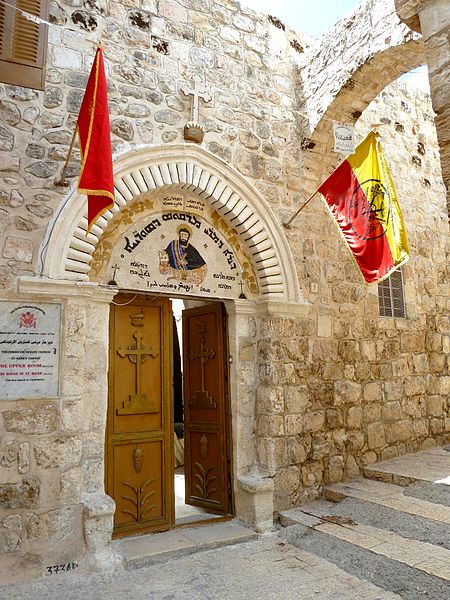Monastery of Saint Mark
Harv and Sfn no-target errorsOriental Orthodox monasteries in JerusalemSyriac Orthodox churches in Jerusalem

The Syriac Orthodox Monastery of Saint Mark (Syriac: ܕܰܝܪܳܐ ܕܡܳܪܝ̱ ܡܰܪܩܽܘܣ ܕܣܽܘܪ̈ܳܝܝܶܐ, romanized: Dayrā dMār Marqus dSūrāyē) is a Syriac Orthodox monastery and church in the Old City of Jerusalem. According to a 6th-century inscription that was found at the Monastery of St Mark's in Jerusalem during a restoration in 1940, the church is supposed to have been built on the ancient site of the house of Mary, mother of St. Mark the Evangelist (Acts 12:12) and the place of the Last Supper of Christ with His disciples. However, other Christians believe that the Last Supper was held at the nearby Cenacle on Mount Zion.
Excerpt from the Wikipedia article Monastery of Saint Mark (License: CC BY-SA 3.0, Authors, Images).Monastery of Saint Mark
Heil HaHandasa, Jerusalem Morasha
Geographical coordinates (GPS) Address Nearby Places Show on map
Geographical coordinates (GPS)
| Latitude | Longitude |
|---|---|
| N 31.7763 ° | E 35.2305 ° |
Address
העיר העתיקה
Heil HaHandasa
9511208 Jerusalem, Morasha
Jerusalem District, Israel
Open on Google Maps









